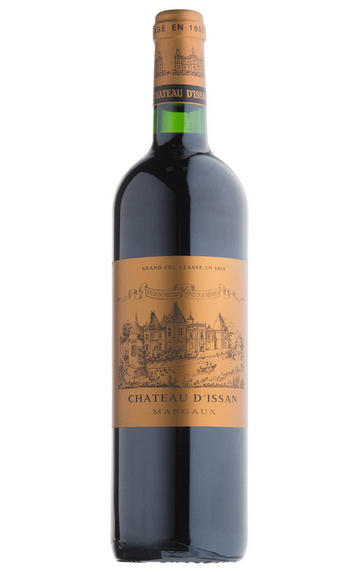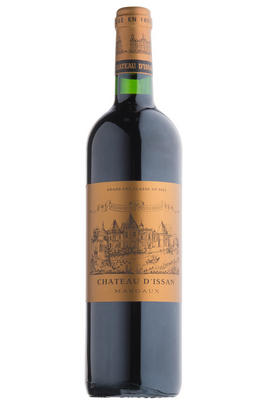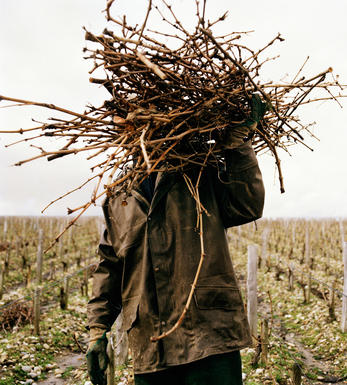
2010 Château d'Issan, Margaux, Bordeaux

Critics reviews
Robert M. Parker, Jr. - 28/02/2013
Jancis Robinson MW- jancis robinson.com 18 Apr 2011
Robert Parker - Wine Advocate - Feb 2013
Emmanuel Cruse has done a superb job at this moated castle on the southern approach to the appellation of Margaux. The dense blue/purple-tinged 2010 reveals notes of violets, blue and black fruits, a striking minerality, excellent purity, texture and length, a medium to full-bodied mouthfeel and noticeable but sweet, well-integrated tannins. It should drink well in 5-6 years and last 25-35.
Robert Parker- Wine Advocate- May 2011
About this WINE

Chateau d'Issan
Ch. d`Issan is a Third Growth Margaux property that produces about 100,000 bottles each year. Its richly aromatic and silky-textured Clarets are often amongst the best of the appellation.
The estate’s history dates back to the 1152 when the wine was officially served at the wedding of Eleanor of Aquitaine to King Henry II, the beginning of a special relationship between Bordeaux and England. The d’Essenault family owned the estate over five generations and rebuilt the existing château at the end of the 16th century. Surrounded by a moat, it is one of the oldest châteaux in the region and is frequently described as the most romantic in the Médoc.
In 1945 the Cruse family – already established in the Médoc for more than 150 years – purchased the property. Today Emmanuel Cruse runs the estate with the Lorenzetti family (owners of Chx Pédesclaux and Ladouys). They own 44 hectares in Margaux, planted with 62 percent Cabernet Sauvignon and 38 percent Merlot. The wine spends between 16 and 18 months in oak (around 50 percent new).

Margaux
If Pauillac can be seen as the bastion of ‘traditional’ Red Bordeaux, then Margaux represents its other facet in producing wines that are among Bordeaux’s most sensual and alluring. It is the largest commune in the Médoc, encompassing the communes of Cantenac, Soussans, Arsac and Labaude, in addition to Margaux itself. Located in the centre of the Haut-Médoc, Margaux is the closest of the important communes to the city of Bordeaux.
The soils in Margaux are the lightest and most gravelly of the Médoc, with some also containing a high percentage of sand. Vineyards located in Cantenac and Margaux make up the core of the appelation with the best vineyard sites being located on well-drained slopes, whose lighter soils give Margaux its deft touch and silky perfumes. Further away from the water, there is a greater clay content and the wines are less dramatically perfumed.
Margaux is the most diffuse of all the Médoc appelations with a reputation for scaling the heights with irreproachable wines such as Ch. Margaux and Ch. Palmer, but also plumbing the depths, with too many other châteaux not fulfilling their potential. There has been an upward shift in recent years, but the appellation cannot yet boast the reliability of St Julien. However, the finest Margaux are exquisitely perfumed and models of refinement and subtlety which have few parallels in Bordeaux.
Recommended Châteaux: Ch. Margaux, Ch. Palmer, Ch. Brane-Cantenac, Ch. Rauzan-Ségla , Ch. Dufort-Vivens, Ch. Ferrière, Ch. du Tertre, Ch. Giscours, Ch. d'Angludet.

Cabernet Sauvignon Blend
Cabernet Sauvignon lends itself particularly well in blends with Merlot. This is actually the archetypal Bordeaux blend, though in different proportions in the sub-regions and sometimes topped up with Cabernet Franc, Malbec, and Petit Verdot.
In the Médoc and Graves the percentage of Cabernet Sauvignon in the blend can range from 95% (Mouton-Rothschild) to as low as 40%. It is particularly suited to the dry, warm, free- draining, gravel-rich soils and is responsible for the redolent cassis characteristics as well as the depth of colour, tannic structure and pronounced acidity of Médoc wines. However 100% Cabernet Sauvignon wines can be slightly hollow-tasting in the middle palate and Merlot with its generous, fleshy fruit flavours acts as a perfect foil by filling in this cavity.
In St-Emilion and Pomerol, the blends are Merlot dominated as Cabernet Sauvignon can struggle to ripen there - when it is included, it adds structure and body to the wine. Sassicaia is the most famous Bordeaux blend in Italy and has spawned many imitations, whereby the blend is now firmly established in the New World and particularly in California and Australia.


Buying options
Add to wishlist
Description
Bags of fresh black fruit on the nose and very good intensity lead to fresh, crunchy and focused fruit on the palate; this is a very sexy, classic Margaux with a lovely, long and very well-balanced finish. Emmanuel Cruse and his team are certainly bringing this estate to the Margaux Premier League; it is getting better and better… chapeau!
Max Lallondrelle, Bordeaux Wine Buyer
Having suffered greatly during both World Wars, Ch. d'Issan sadly underperformed for decades. But all has changed at this pretty Third Growth property due to serious vineyard replanting and cellar refurbishments by the Cruse family.
The vines are now reaching maturity and the quality in recent years has been superb (with Parker points to match). It has shed the angular firmness and replaced it with Margaux style elegance and charm. With few properties in the commune of Margaux producing quality wine, Ch. d'Issan is a property to watch. With a small annual production of around 5000 cases of Grand Vin this is a must have.
2010 d'Issan is beautifully perfumed with a rich silky dark fruit palate of blue plums and morello cherries, balanced by a surprising freshness and a very fine but obvious tannic structure.
Fine Wine Team
wine at a glance
Delivery and quality guarantee